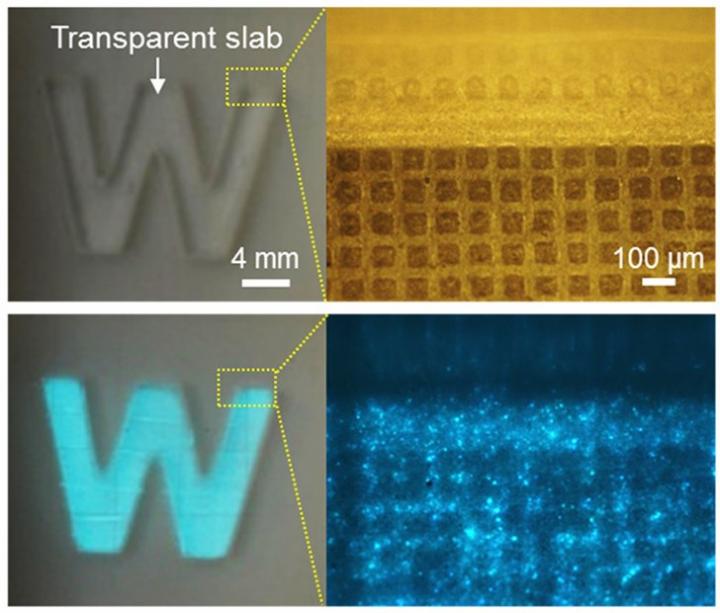

An electronic skin glows when a transparent 'W' is pressed onto it, and a voltage is applied (bottom).
Credit: The American Chemical Society
An electronic skin that can mimic the full range of biological skin's sensitivity has great potential to transform prosthetics and robotics. Current technologies are very sensitive, but only within a narrow range of weak pressures.
Under high pressures that could cause damage, the electronic skins' sensitivity fades. To address this shortcoming, Bin Hu and colleagues at the Huazhong University of Science and Technology turned to the Atolla jellyfish for inspiration.
This bioluminescent, deep-sea creature can feel changes in environmental pressure and flashes dramatically when it senses danger.
Building on the idea of a visual warning in response to a physical threat, the researchers combined electric and optical systems in a novel electronic skin to detect both slight and high-force pressures. They embedded two layers of stretchy, poly-dimethysiloxane, or PDMS, film with silver nanowires.
These layers produce an electrical signal in response to slight pressures, such as those created by a breeze or contact with a leaf.
Sandwiched in between the silver nanowire electrodes is a PDMS layer embedded with phosphors. This layer kicks in and glows with growing intensity as the physical force increases.
The researchers say this approach more closely copies the wide range of pressures the human skin can feel.
###
The authors acknowledge funding from the National Natural Science Foundation of China, Frontier and Key Technological Innovation Special Foundation of Guangdong Province and the Fundamental Research Funds for the Central Universities of China.
The abstract that accompanies this study is available here.
The American Chemical Society, the world's largest scientific society, is a not-for-profit organization chartered by the U.S. Congress. ACS is a global leader in providing access to chemistry-related information and research through its multiple databases, peer-reviewed journals and scientific conferences. ACS does not conduct research, but publishes and publicizes peer-reviewed scientific studies. Its main offices are in Washington, D.C., and Columbus, Ohio.
To automatically receive news releases from the American Chemical Society, contact newsroom@acs.org.
Follow us on Twitter | Facebook












